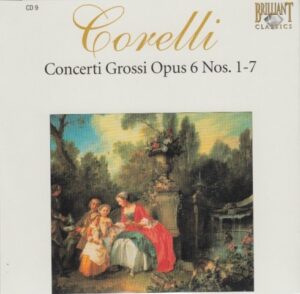 After waking up this morning to a snow-covered world, the first winter weather advisory we’ve had in a month or two (it’s been an unseasonably warm winter here in Michigan), and temperatures in the low 20s, I decided to wipe the sleep from my eyes, brave the elements, and high-tail it to Panera, my favorite early morning spot for working on projects such as this.
After waking up this morning to a snow-covered world, the first winter weather advisory we’ve had in a month or two (it’s been an unseasonably warm winter here in Michigan), and temperatures in the low 20s, I decided to wipe the sleep from my eyes, brave the elements, and high-tail it to Panera, my favorite early morning spot for working on projects such as this.
The snow, about an inch of it, was light. Not heavy or sticky. So it didn’t take long to brush off the car. The roads were no big deal, either.
And now, here I sit, munching on a sesame seed bagel slathered with chive and onion cream cheese (well, as much slathering as the tiny Panera cream cheese cups will allow), and sipping a Light Roast coffee doctored with cinnamon, honey, and half and half.
 Life, as they say, is good.
Life, as they say, is good.
I’m supposed to be watching a couple of lecture videos on the doctrine of salvation in my Systematic Theology II class. But I don’t want my priorities to get all out of whack.
First, Corelli, CD 9. Then, Systematic Theology.
The music I’m listening to is lively, very baroque. (I wonder if this is considered baroque music?)
Whatever a concerti grossi is, I’m diggin’ it.
Just the Facts
CD 9 of this 10-CD box set consists of 34tracks that clock in at 75:11.
According to the information on the back of the box, the music was performed by Musica Amphion, “Directed from the harpsichord by Pieter-Jan Belder.”
I hadn’t heard of Musica Amphion before starting this project. As a quick reminder, according to the booklet in the box set,
Musica Amphion, founded by harpsichordist/recorder play Pieter-Jan Belder, focuses on performing 17th and 18th century orchestral and chamber music on original instruments.
The musicians are:
Remy Baudet, violin
Sayuri Yamagata, violin
Albert Bruggen, cello
Pieter-Jan Belder, harpsichord
If the information on the back of the box holds true for all performances, these were recorded in the summer, 2004.
The back of the CD sleeve tells me this is “12 Concerti Grossi opus VI,” which piques my interest enough to make me look it up online.
Lo! and Behold! there’s an entry for this on Wikipedia, which tells me,
Twelve concerti grossi, Op. 6, is a collection of twelve concerti written by Arcangelo Corelli probably in the 1680s but not prepared for publication until 1714. They are among the finest and first examples of concerti grossi: concertos for a concertino group (here a 1st violin, a 2nd violin and a cello) and a ripieno group of strings with continuo. Their publication – decades after their composition and after Italian composers had moved to favor the ritornello concerto form associated with Vivaldi – caused waves of concerto grosso writing in Germany and England, where in 1739 George Frideric Handel honored Corelli directly with his own “Opus 6” collection of twelve.
Now we’re getting somewhere.
But there’s a link to the phrase concerti grossi on another Wiki article that I must explore. So, I did. And I discovered this:
The concerto grosso; Italian for big concert(o), plural concerti grossi is a form of baroque music in which the musical material is passed between a small group of soloists (the concertino) and full orchestra (the ripieno, tutti or concerto grosso). This is in contrast to the solo concerto which features a single solo instrument with the melody line, accompanied by the orchestra.
The first major composer to use the term concerto grosso was Arcangelo Corelli. After Corelli’s death, a collection of twelve of his concerti grossi was published. Not long after, composers such as Francesco Geminiani, Pietro Locatelli, Giovanni Benedetto Platti and Giuseppe Torelli wrote concertos in the style of Corelli. He also had a strong influence on Antonio Vivaldi.
See what I learn doing these projects?
Corelli really was a big deal in his day. And Vivaldi is next up in my musical journey. Groovy.
The recording is marked DDD, which means it is an all-digital recording. (Digitally recorded, Digitally mixed, and Digitally mastered.) Purists, those folks who think vinyl sounds better than CDs (they’re wrong) would probably look askance at this recording. To my ears, this is the best way to record music to precisely capture every note. But what do I know?
Just the Feelings
Recording quality: 5
Overall musicianship/vocals: 5
CD liner notes: 2
How does this make me feel: 4
I thoroughly enjoyed these performances. I can’t say any one of them stuck out, the way at least one performance on previous CDs did. But I do know that I prefer allegro music over, say, largo or adagio. Give me an allegro any time!
I’m still not a huge fan of the harpsichord. But when it’s used as an accent as it is in these pieces then I kind of like it. If these were solo harpsichord tunes I’d have to poke pencils into my eardrums.
This CD is fun. But not essential to me. I doubt I’ll ever hear it again.
